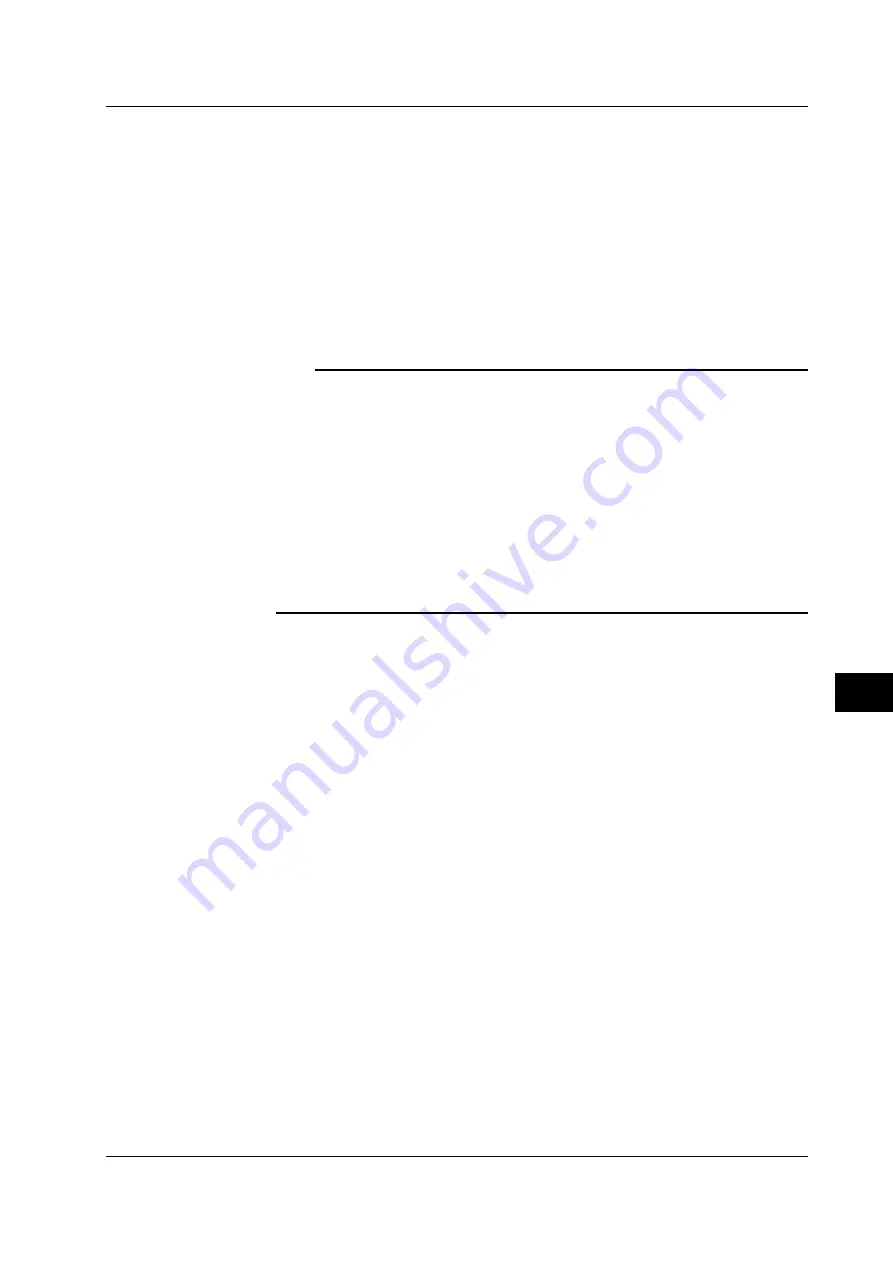
11-17
IM 253710-01E
Waveform Analysis
11
• H&V cursor (H&V)
H cursors (Cursor1, Cursor2) and V cursors (Cursor3, Cursor4) are displayed. The
X-axis values and Y-axis values of each cursor can be measured. The four cursors
are set on the same waveform.
Y1 : Y-axis value of Cursor1
Y2 : Y-axis value of Cursor2
∆
Y : The difference between the Y-axis values of Cursor1 and Cursor2
X1 : X-axis value of Cursor3
X2 : X-axis value of Cursor4
∆
X : The difference between the X-axis values of Cursor3 and Cursor4
1/
∆
X : The inverse of the difference between the X-axis values of Cursor3 and Cursor4
Note
• When the measurement mode is harmonic and the time base is set to internal clock,
the unit of the horizontal axis becomes frequency (Hz) if the waveform on which to
place the marker is set to Math1 or Math2 that is computing FFTs. The converting
equation is as follows:
f[Hz] = fs
×
N/(Max Order)
where fs is the sampling rate (see appendix 1), N the
harmonic order, and Max Order the maximum harmonic
order under analysis (see section 10.7).
• When the measurement mode is normal or harmonic and the time base is set to
external clock, the unit of the horizontal axis becomes harmonic order if the waveform
on which to place the marker is set to Math1 or Math2 that is computing FFTs.
•
∆
Y,
∆
X, and 1/
∆
X are computed when the units for Cursor1 and Cursor2 are the same
(time or frequency, for example).
11.4 Measuring with the Cursor
















































